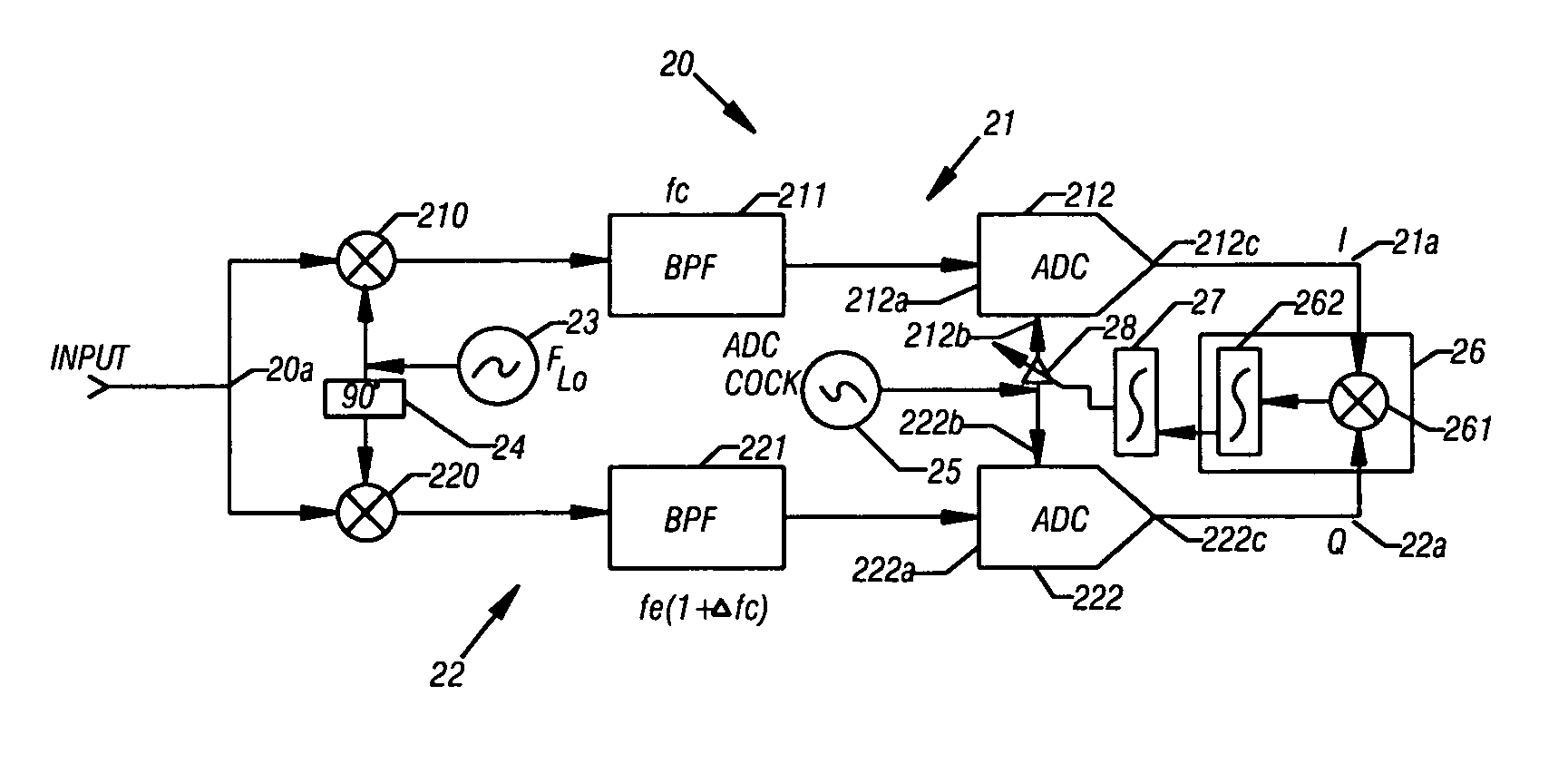I/Q timing mismatch compensation
a timing mismatch and compensation technology, applied in the field of demodulation techniques, can solve problems such as the degree of phase mismatch, the loss of gain between the two channels, and the adverse influence of image rejection performan
- Summary
- Abstract
- Description
- Claims
- Application Information
AI Technical Summary
Benefits of technology
Problems solved by technology
Method used
Image
Examples
Embodiment Construction
[0020] For a thorough understanding of the subject I / Q timing mismatch compensation technique, reference may be had to the following Detailed Description, including the appended Claims, in connection with the above described drawings.
[0021] Referring now to FIG. 1, depicted there is a simplified representation of a conventional I / Q demodulator 10, in which there is graphically represented a number of the potential sources of mismatch that may arise between a representative I-channel 11 and a representative Q-channel 12. As may be seen in FIG. 1, an input signal, in the form of a modulated carrier, is concurrently coupled to the I-channel and to the Q-channel. Specifically, the modulated input signal is coupled to an I-channel mixer 111 and to a Q-channel mixer 121. An output of an LO 13 is coupled directly to I-channel mixer 111 and through a quadrature phase shifter 14 to Q-channel mixer 121. Quadrature phase shifter 14 imparts a nominal 90° phase shift in the output of LO 13.
[00...
PUM
 Login to View More
Login to View More Abstract
Description
Claims
Application Information
 Login to View More
Login to View More - R&D
- Intellectual Property
- Life Sciences
- Materials
- Tech Scout
- Unparalleled Data Quality
- Higher Quality Content
- 60% Fewer Hallucinations
Browse by: Latest US Patents, China's latest patents, Technical Efficacy Thesaurus, Application Domain, Technology Topic, Popular Technical Reports.
© 2025 PatSnap. All rights reserved.Legal|Privacy policy|Modern Slavery Act Transparency Statement|Sitemap|About US| Contact US: help@patsnap.com



